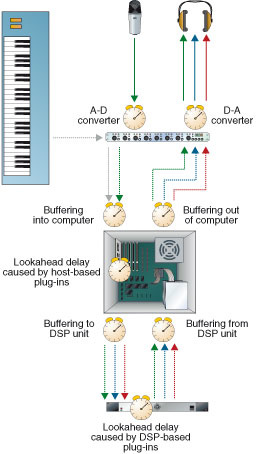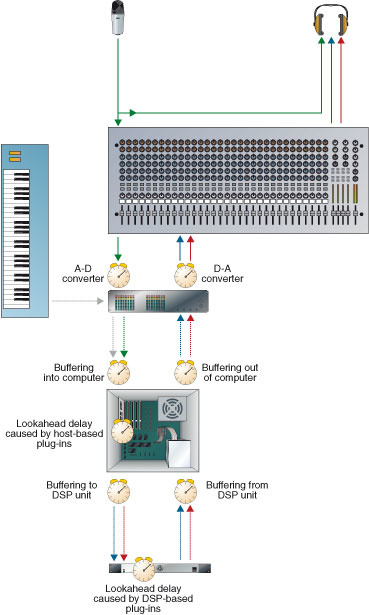Avis sur cette config mao
- 209 réponses
- 22 participants
- 14 436 vues
- 20 followers
melmothe
Je souhaite investir dans une machine pour des enregistrements acoustiques plus un peu d'ambiant :
- Intel i7 -6700 k
- CM : asus z170-A
-samsung ssd 850 evo 250 go
-Gskill ddr4 16gb
-bequiet pure rock
-asus thunderboltex ii ( si je partais pour une carte son thunderbolt)
-cooler master silencio 550
-alimentation ldlc qs 450 gold
Cout total : environs 1000 euros
Cependant certains pro me conseille un mac ( comme d'hab) . L'avantage entre autre de brancher une carte son en thunderbolt pour le minimum de latence . Mais globalement on me fait la louange du mac pour sa durée dans le temps et la cohérence du materiel .
Un avis sur cette config et sur l’éternel affrontement mac/pc ?
Merci beaucoup pour votre aide
picpus
Bon peu importe ce que j'apporte, décidément.
Bah pour les membres la vidéo annoncée, va être faite et poster et je vous laisserais tranquille.
PS: si, il y à bien une chose sur là quel youtou ne c'est pas trompé, c'est sur ma sincérité.
Dr Pouet
https://www.soundonsound.com/sound-advice/choosing-audio-interface
Direct Monitoring
You can also bypass such delays using the so-called 'zero latency monitoring' features found on many interfaces, which send the output of the interface A-D converters direct to its D-A converters, so you can monitor without the added latency of the computer buffers. This reduces latency to a couple of milliseconds or less, which (for many people) is close enough to the 'true' zero latency of analogue connections. If you're confused about the causes of latency, and the various solutions that are possible, take a look at our June 2007 feature on the subject :
L'article de juin 2007 évoqué ; il est complètement centré sur les questions de monitoring et latence :
https://www.soundonsound.com/techniques/living-latency
The good news is that the amount of delay the converters are responsible for is small. Typically, A-D and D-A converters together delay the signal by considerably less than five milliseconds (ms), and it's generally agreed that most people's perceptions are not sharp enough to notice a delay of this order. In fact, this is the reason why latency is not usually thought of as a problem in digital mixers, or stand-alone digital multitrackers. Digital mixers do have latency, but usually, this is only to the extent that their converters have latency, which is small enough to be imperceptible in most circumstances.
Avec un bon schéma :

Monitoring analogique avec une table de mixage en amont :

Monitoring your inputs in the analogue domain is the only way to hear them with no latency at all, and if you have the right analogue hardware, it's straightforward to do.
A few digital audio interfaces, such as Digidesign's M Box, also contain analogue circuitry allowing you to set up this kind of direct monitoring, but this is unusual.
For this reason, nearly all modern audio interfaces offer a feature that is variously called 'low-latency monitoring', 'near-zero latency', 'direct monitoring' or (wrongly and confusingly) 'zero latency'. Behind the array of different names, the principle is always the same: inputs that you want to monitor can be routed directly to outputs, but this time, the routing happens in the digital domain. In essence, the input signal from your microphone or guitar passes through the A-D converter, and is then split. One copy goes to the computer to be recorded. The other is passed straight to the output of the soundcard, where it's converted back to analogue.
ASIO Direct Monitoring

The idea behind Steinberg's ASIO Direct Monitoring protocol (see diagram, left) is to provide a way for the DAW to tell the control panel what to do. The amount of control that ASIO Direct Monitoring gives to the DAW application is limited, but the key feature it enables is allowing the DAW to switch direct monitoring on and off for each input. This means you can turn monitoring off and on for any input without leaving your DAW.
[ Dernière édition du message le 24/06/2016 à 13:57:58 ]
Dr Pouet
Tu confonds le nombre de pistes présentes dans un projet global de mixage et le nombre de pistes transitant par la carte son.
Tu peux avoir 999 pistes en 192khz et 24 bits passant sans souci par de l'USB 1, si tout simplement ça passe par le bus master : en fait il n'y aura qu'une seule piste stereo.
picpus
Citation de : Dr Pouet
Citation de youtou :Tu confonds le nombre de pistes présentes dans un projet global de mixage et le nombre de pistes transitant par la carte son.
Tu peux avoir 999 pistes en 192khz et 24 bits passant sans souci par de l'USB 1, si tout simplement ça passe par le bus master : en fait il n'y aura qu'une seule piste stereo.
Oui biensur les cartes son USB 3.0, peuve gérer 500 inputs Hardware...
Et non, tu ne peux pas gérer 999 pistes VST, Instru, Bus, si ton PC ne suis pas, même avec carte son USB 3.0 ( comme la spécifié l'admin)
[ Dernière édition du message le 24/06/2016 à 14:56:58 ]
Anonyme
picpus
j' ai assé perdu de temps, ceux qui veule la vidéo, ils ont juste à me la demander sur un des sites M.A.O ou je suis modérateur
Allé bonne continuation.
TomA SL

Traumax
Ne pas oublier un bon casque, une paire de monitors corrects et on a un très bon outil pour maquetter à la maison.
De nos jours, se pignoler sur des bidouillages d'IRQ et la bande passante de l'USB est une pure perte de temps. Les Vrais ne se préoccupent pas de ça. Ils ont des outils qui fonctionnent pour FAIRE DE LA MUSIQUE, PAS DE L'INFORMATIQUE.
johnfaustus
Hors sujet :
'tain ce site MAO en mode didguitar
Jimbass
demander sur un des sites M.A.O ou je suis modérateur
Où ca ?
Musikmesser 2013 - Bullshit Gourous - Tocxic Instruments - festivals Foud'Rock, Metal Sphère et la Tour met les Watts
- < Liste des sujets
- Charte


